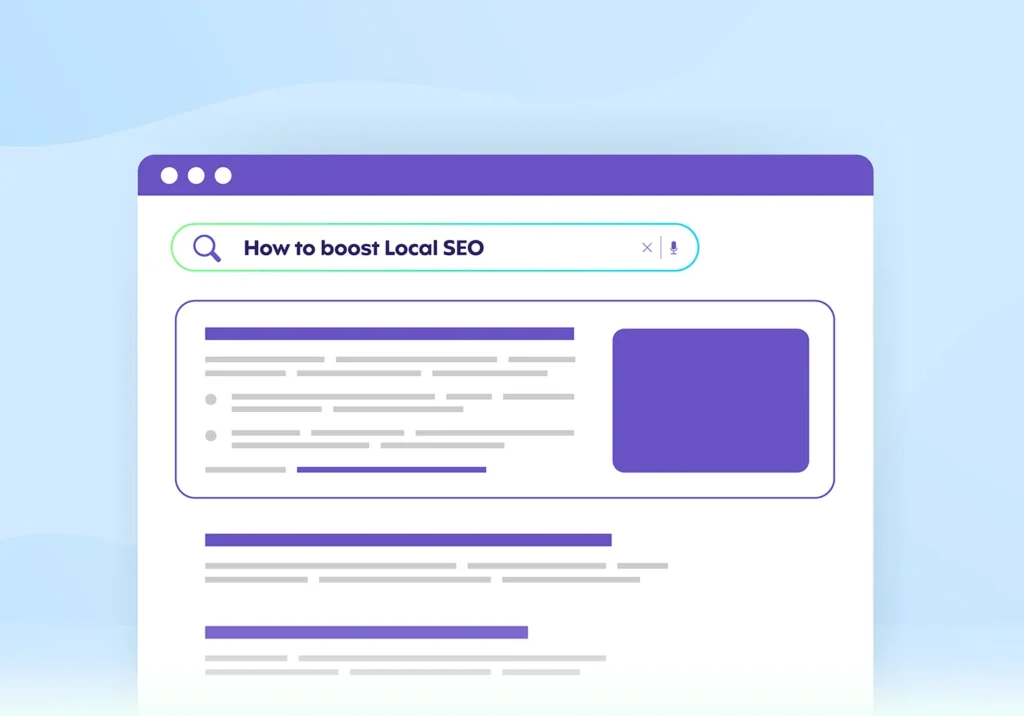You know that feeling when you discover something so useful you can’t believe it’s not everywhere? That’s schema markup in the world of SEO. It’s one of those behind-the-scenes tools that quietly transforms how search engines see your website. That’s why it’s a mainstay in my toolkit for our SEO services at Clockwork.
Let’s dive into why schema markup matters for your business.
What is Schema Markup, Really?
Content and keywords are foundational to effective SEO, but they’re just the tip of the iceberg.
Schema markup takes code optimization to the next level by essentially giving Google and other search engines (along with AI models) a cheat sheet for your website. Using structured data (most commonly JSON-LD – a JavaScript format), you can label your content so search engines understand exactly what each piece of information represents.
Think of this code as a translator: Without schema markup, a price is just text, but with it, search engines know it’s a “price,” making it easier to highlight in rich results. The idea is that your webpage content isn’t just words – it’s data, clearly defined for both humans and machines.
Simple Schema Markup Example
Below is a quick snippet of schema markup that would help search engines identify a product and its price using custom JavaScript – or JSON-LD (JavaScript Object Notation for Linked Data).
If you were selling a product named “Handmade Ceramic Coffee Mug,” you might use Product Schema (I’ll cover more a few more formats and specific types of schema markup later) to transmit this information to search engines:
<script type="application/ld+json">
{
"@context": "https://schema.org/",
"@type": "Product",
"name": "Handmade Ceramic Coffee Mug",
"offers": {
"@type": "Offer",
"price": "19.99",
"priceCurrency": "USD"
}
}
</script>
Labeling elements like the product name and price with JSON-LD, as we did above, ensures the data is easy for humans to read and write and simple for machines to understand and process.
While site visitors focus on what’s in front of them, your schema markup quietly guides search engines behind the scenes, helping your site earn more visibility in search results.
How Schema Markup Works: The Technical Side
Before we explore specific schema types, let’s talk quickly about schema formatting. Feel free to skip to the next section if the technical side isn’t your thing. For my fellow technical folks, it helps to know that there are three main formats for adding schema markup to your site.
Think of these formats as different languages that all convey the same message – you’re just choosing the one that’s easiest for you (or your developers) to work with.
-
- JSON-LD: Google’s preferred format, using JS to add schema markup
-
- Microdata: Added directly to your HTML using attributes
-
- RDFa: Another HTML attribute approach similar to Microdata
At Clockwork, we typically use JSON-LD. It’s cleaner and easier to maintain. Instead of embedding markup throughout your HTML, you can add a single block of code that creates a template, making it easy to add, update, and remove. Injecting this code is like giving search engines a separate instruction manual for your content rather than writing notes in the margins.
Each schema type (more on this in a minute) can be implemented using any of these formats, but they all serve the same purpose: helping search engines understand and display your content effectively. At Clockwork, we’ve seen the impact of choosing the right schema mix – one client achieved a 190% increase in search traffic.
Why Schema Markup Matters for SEO Success
Better search visibility is still the name of the game – and has been for a while. After decades of optimizing websites through SEO, first at New Tricks and now at Clockwork, I’ve seen how proper schema setup (with routine maintenance) helps boost visibility by:
-
- Making your content crystal clear to search engines
-
- Enhancing how your listings appear in search engine results pages (SERPs)
-
- Boosting click-through rates with rich snippets
-
- Powering up voice search optimization
With the rise of AI and advanced search algorithms, proper data structure is a must when considering the best SEO plan for your business. That’s why we use (and suggest using) schema markup to curate a more engaging search experience for both your target audience and search engines alike.
Types of Schema Markup (That Pack the Biggest Punch)
There are many types of scheme markup. Your digital marketing strategy might need a different mix of schema types than others. Sometimes, just one will do, but usually, a combination works best to tell your story to search engines like Google in the most detailed way possible.
Here are the structured data markups that Google supports. In my experience, these are the schema types that deliver the most value for our clients:
Product Schema
Want your products to stand out in search results? Product schema transforms your listings into rich shopping experiences that catch the eye, like in our JSON-LD example from earlier. Instead of hoping shoppers click through to see prices and stock levels, you’re putting that information front and center. Our e-commerce clients love this because it helps them stand out in crowded markets and attract more qualified clicks.
Review Schema
Nothing builds trust like social proof. Review schema puts your ratings front and center in search results, turning those glowing reviews into visual proof of your reputation. When potential customers see those golden stars in search results, they’re more likely to click through – we’ve seen it time and again with our service-based clients who compete in crowded markets.
Event Schema
Got upcoming events? Event schema lets potential attendees see all your event details – dates, times, locations – directly in search results. I’ve seen this make a huge difference for venues and event organizers because it puts events front and center when people are actively searching. Instead of hoping people click through to your site, you’re giving Google everything it needs to showcase your events in rich results, event carousels, and even Google Maps.
Too much technical talk? Book a simple SEO Audit – we’ll handle the rest.
Local Business Schema
For our Atlanta-based clients (and anyone focused on local SEO), NAP (Name, Address, Phone) schema is a key piece of the local visibility puzzle. When someone searches for your type of business “near me,” this markup helps ensure your information appears exactly where and how you want it – in maps, knowledge panels, and local business listings. It’s the difference between hoping Google gets your information right and knowing it will.
FAQ Schema
FAQ schema transforms a simple Q&A section into eye-catching, accordion-style results right in the SERPs. Visitors get answers up front, often leading to higher click-through rates and more time on site once they arrive. This is particularly valuable for service providers, educational resources, and brands that field a lot of common questions.
Organization Schema
Organization schema helps define who you are and what you do. Adding details like your logo, official name, and social profiles gives search engines more confidence in your brand identity. It might not be as flashy as product stars or event listings, but it’s foundational for establishing credibility.
Article Schema
If you’re regularly publishing content—think blog posts, news articles, or guides—article schema helps each piece stand out. You can qualify for rich results like headlines, images, and publication dates that appear in news carousels and top stories, which positions you as a trusted source right in search results.
Video Schema
For brands with video content (product demos, tutorials, interviews), Video schema helps surface thumbnails, durations, and descriptions directly in SERPs. Instead of crossing your fingers and hoping that searchers click through, you’re guiding them with a visual teaser that sets expectations and piques curiosity.
Breadcrumb Schema
Breadcrumb schema clarifies your site’s structure, showing searchers exactly where they are on your site before they click through. It’s subtle, but it streamlines navigation and helps search engines understand how your pages relate to each other. That can improve visibility and user experience all at once.
At the end of the day, the best types of schema for your site depend on what you offer and how you engage with customers. You can fine-tune how search engines display your information by exploring multiple schema types. This is not only to attract the right clicks but also to make a stronger first impression before visitors even land on your site.
How Schema Markup Works for Your SEO
While schema markup might seem technically daunting, we’ve refined our implementation process to make it seamless and easy to understand for all. Whether you’re diving in yourself or working with the best SEO packages in Atlanta, here’s what you need to know:
-
- First, identify which schema types (above) align with your content and goals
- Use structured data generators or WordPress plugins (we have our favorites)
- Implement the code or configure your plugin
- Validate everything using Google’s testing tools
Here’s something I learned the hard way: validation isn’t optional with schema markup. Every time a client skips a validation check, something eventually breaks. That’s why we built regular schema audits into our SEO maintenance packages – managed by yours truly.
Schema Implementation Tools: From Basic to Advanced
The right implementation approach depends on your technical comfort level and website setup. Here’s how we tackle it at different levels at Clockwork:
Getting Started: Google’s Structured Data Helper
Perfect for understanding schema basics, Google’s Structure Data Helper is like having a translator who speaks both website and search engine. While it’s user-friendly, remember it’s just scratching the surface of what’s possible with schema markup.
WordPress Implementation: Beyond Basic Plugins
Plugins like Schema Pro or Rank Math can handle the heavy lifting for WordPress sites (about 70% of our client base). But choose carefully – we’ve tested dozens over the years, and the right plugin needs to balance control with usability. Some key considerations:
-
- Compatibility with your theme
- Regular updates and support
- Flexibility for custom implementations
- Performance impact
Enterprise Solutions: The Google Tag Manager Approach
For larger sites with dynamic content, we typically use Google Tag Manager (GTM). This tool lets you attach custom code to URLs to track and analyze search data. It offers:
-
- Centralized schema management
- Deployment without touching core code
- Advanced testing capabilities
- Scalable implementation
No matter which implementation approach you choose—basic tools or more advanced solutions—your work doesn’t end at setup. Ensuring your schema’s success requires consistent testing, monitoring, and fine-tuning.
The Testing Trinity: How to Validate Schema Markup
Implementing schema markup is only half the battle. To keep your enhanced listings performing optimally, you need a systematic approach to validate and maintain your starting point:
-
- Initial Validation
We use Google’s Rich Results Test as our first line of defense. It’s like a spell-checker for your schema markup, catching syntax errors and preview issues before they affect your search visibility.
-
- Syntax errors and formatting problems
-
- Proper markup alignment with schema.org standards
-
- Accurate previews of how your content will appear in search results
-
- Initial Validation
-
- Performance Monitoring
Once live, we use Google Search Console to keep tabs on how your schema-driven results perform. We look at click-through rates, search queries, and rich result performance trends. If something’s off, we’ll know—and we’ll address it quickly.
-
- Click-through rate changes
-
- Search query patterns
-
- Rich result performance
-
- Error detection
-
- Performance Monitoring
-
- Ongoing Maintenance
Schema standards evolve, and your content changes over time. We review and update your markup monthly, adjust for new opportunities, and always stay aligned with current guidelines. We make sure your structured data remains a valuable, long-term asset.
-
- Validating existing markup
-
- Updating for content changes
-
- Checking for new schema opportunities
-
- Monitoring search engine guidelines
-
- Ongoing Maintenance
Now that you understand a few ways to test, monitor, and maintain your schema markup, let’s cover a few best practices to keep your strategy on the right track.
Dos & Don’ts: Best Practices for Schema Markup
Even with a solid plan, small mistakes can undermine your schema efforts. Here’s how to avoid common traps and keep your strategy on track:
DO THIS:
-
- Keep Schema Up-to-Date: Always ensure your markup reflects your current content—no outdated product details or event times.
-
- Test Before Publishing: Validate your schema with Google’s tools to catch errors early and save time later.
-
- Monitor Performance Regularly: Check your analytics to confirm your changes are actually improving visibility and click-through rates.
-
- Stay Informed: Schema.org guidelines evolve, so follow updates and adapt accordingly.
DON’T DO THIS:
-
- Mark Up Hidden Content: Only apply schema to content visible to users; search engines frown on “secret” details.
-
- Overstuff with Keywords: Keep your markup descriptive, not spammy. A natural approach is more effective and trustworthy.
-
- Skip Validation: Avoid launching new schema without testing. Just one missed bracket can cause big issues.
-
- Set and Forget: Even the best schema needs maintenance. Review it periodically to keep your SEO edge.
Looking Ahead to Better Search Results
Schema markup is fundamental to successful SEO because it’s a core part of how search engines understand your content.
A core part of offering SEO service plans is staying alert to changes in schema standards and search capabilities to keep our clients ahead of the curve.
Need help developing schema markup – or want to check if your current SEO setup is actually working? Let’s talk about how we can boost your search visibility together. Learn more about what your favorite Atlanta SEO company offers and contact us to get started.





